The English coin and note collection is wonderful and historic, some even date back to 1725. Read on for fascinating facts about your English money from Cashfloat.
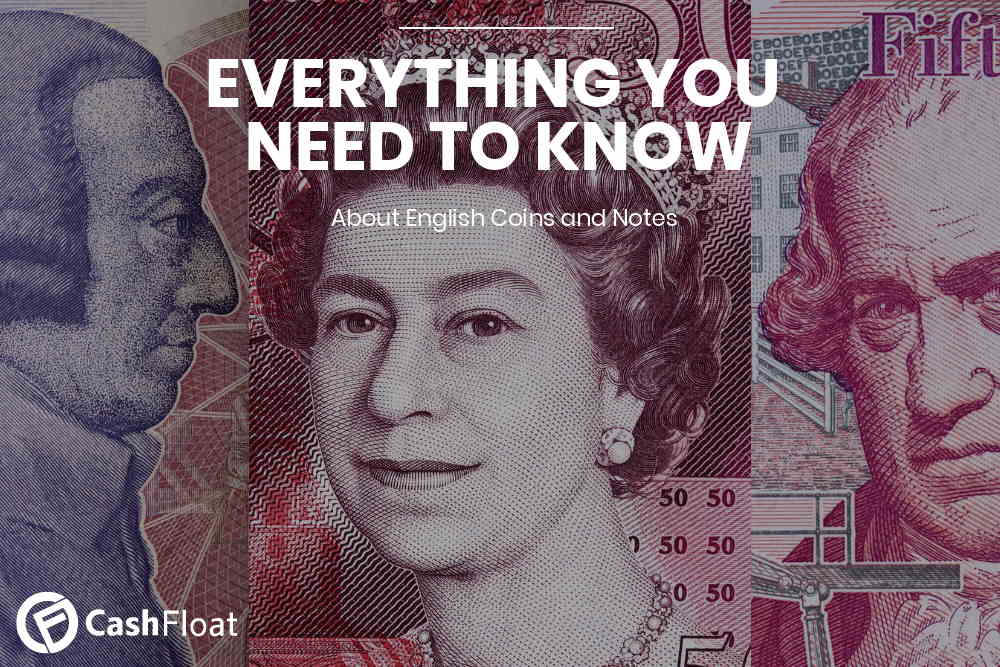
In this article, we explore:
- The Future of English Cash
- The Current English Money System
- New Coin and Notes Unveiled
- Future Note Unveilings
- English Money Coin Collections
English Money
Despite the takeover of debit and credit cards in British society, the use of cash is not yet obsolete. In 2006, 62% of all payments were made by English cash. This dropped to 40% in 2016. English money experts from UK finance predict that by 2026, the cash figures will have fallen further and will make up only 21% of payments. That said, cash will be around as long as some people prefer it.
Lady Tyler, a representative from the House of Lords, shared her concerns that vulnerable people, like old people, people with low incomes or those who rely on pay day loans to get by, are at risk of getting excluded by a cashless society. She argues that although eliminating cash will lower costs for banks, it will push vulnerable people, who don’t own bank accounts into a defenceless position. Mark Trevor, commercial director at Vaultex, which handles one-third of the country’s cash, regards the scares to a cashless society highly exaggerated. People may prefer card for payment, but there are more English money bank notes then there have been.
Cashfloat, a wage day advance alternative lender, explores the past, present and future English coins and notes.
All You Need to Know About British Money
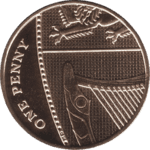 |
| 1p |
| Fondly known as the Penny, the coin was first minted in 1971. It has a bronze appearance with a plain edge. It is worth £0.01. |
| Weight: |
| 3.56g |
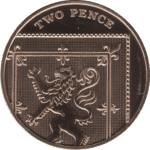 |
| 2p |
| The two pence coin, also known as 2 pee was minted in 1971. Like the 1p, it is bronze and has a plain edge but it has a larger diameter. |
| Weight: |
| 7.12g |
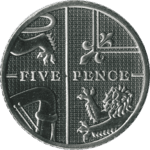 |
| 5p |
| Introduced in 1968 to replace the shilling, the five pence is a small silver coin made with nickel-plated steel with a milled edge. The 5p is worth 1/20th of the pound. |
| Weight: |
| 1968-1990: 5.65g; 1990-present: 3.25g |
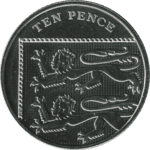 |
| 10p |
In 1968, the 10 pence replaced the florin. The bigger silver coin is made of nickel-plated steel with a milled edge. It is worth 10% of the pound.
|
| Weight: |
| 1968-1992: 11.31g; 1992-present: 6.5g |
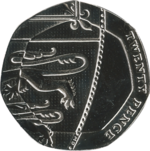 |
| 20p |
The 20 pence is a small, silver, plain edged, equilateral curve heptagon coin made of cupro-nickel. It is worth a 5th of a £1. The Royal Mint introduced it in 1982.
|
| Weight: |
5.0g
|
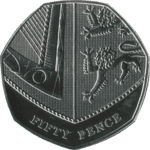 |
| 50p |
Designed in 1969, the 50 pence is a large, silver, seven-sided coin formed as a Reuleaux polygon made of Cupro-nickel. It also has a plain edge. The value is half a £1.
|
| Weight: |
| 1969–1994: 13.5g; 1997–present: 8.0g |
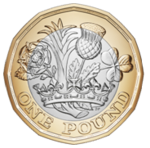 |
| £1 |
| The £1 coin is the denomination of the pound sterling. Before the Royal Mint minted into a coin in 1983, the £1 was a note. A new design in 2016 replaced the round, gold coloured coin. It has 12 sides and is made of 2 metal rings: silver and gold. It is made from nickel brass and nickel plated alloy. |
| Weight: |
| 8.75g |
 |
| £2 |
The current £2 coin were first minted in 1997. The coin in a big round coin with 2 rings of gold and silver. The milled edge has incused lettering and is made using nickel brass and cupro-nickel.
|
| Weight: |
| 12g |
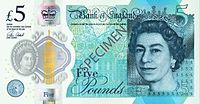
|
| £5 |
Fondly known as the fiver, the £5 is the smallest note issued in the UK at present. In 2016, the Bank of England created a green polymer note to enhance the security features.
|
| Length/Height |
| 125mm*65mm |
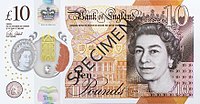
|
| £10 |
The orange ten pound note, known as a tenner, has a long history, dating back to 1759. The current polymer note replaced the cotton note in 2018.
|
| Length/Height |
| 132mm*69mm |
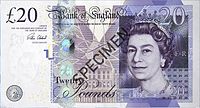
|
| £20 |
| The Bank of England introduced the £20 note in 1725 and they have changed it to different appearances since then. The current purple version is made of cotton and issued in 2007. |
| Length/Height |
| 149mm*80mm |
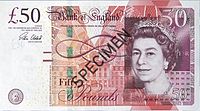
|
| £50 |
| The highest, and the largest, denomination of note in the British system, the £50 was first issued in 1725. It has had many different design since then. it is currently a red themed large cotton note and has been since 2011. |
| Length/Height |
| 156mm*85mm |
New English Notes and Coins
In the past few years, the Royal Mint rolled out a new £1 coin and the Bank of England unveiled the £5 and £10 polymer note. The reason for the new rollout of these English monies is primarily for security and to minimise counterfeit english coins and notes.
The New One Pound Coin
The new £1 coin has twelve sides and is made from two metals. It has a hologram image that changes from a £ symbol to a 1 when viewed from different angles. It has micro lettering on both sides; ‘one pound’ and the date of production. This new coin is virtually impossible to reproduce illegally due to the many qualities it has. At the beginning the new £1 coin took time to adapt to. The treasury announced that the £1 coin is going to be unveiled abroad.
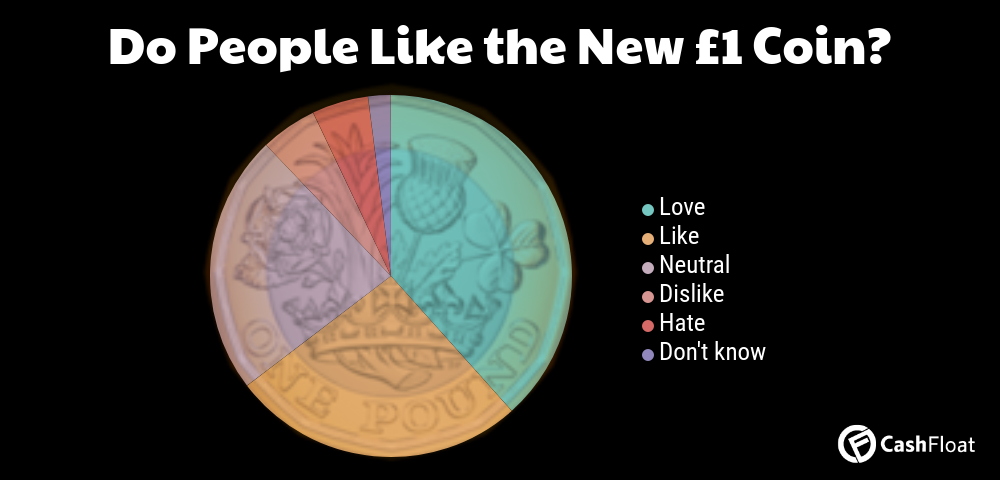
The New £5 Notes
In 2016, the Bank of England unveiled the new 5 pound note. It is made of a new polymer material and features Winston Churchill on the back and the Queen at the front. The design of the new plastic note is for three basic reasons.
- Cleaner – It it more resistant to dirt and moisture.
- Secure – Harder to copy due to multifaceted security features
- Durable – Made to last longer making it more environentaly friendly.
The New £10 Note
Like the 5 pound note, the new 10 pound note is also made with the polymer ‘paper’. However, the 10 pound note is slightly newer. The Bank of England unveiled it in September 2017 and the note features Jane Austen on the back and of course the Queen on the front. The benefits for the 5 pound note remain the same for the new £10 note.
Is There Going to Be a New £20 or £50 Note?
In October 2018, the Bank of England informed the public that a new £20 note would be unveiled in 2020. The public has been asked to vote for the character to be displayed on the new 20 pound note. The character will be announced in 2019. The new £50 note will follow shortly after the new 20 pound note. Again, they most probably will be made of polymer paper.
Will 1p and 2p Coins Be Axed?
There have been calls to abandon using 1p and 2p coins. 60% of our copper coins are used in only one transaction only. The majority will either be tossed or stored in jars. Sarah Coles, an analyst at investment firm Hargreaves Lansdown, says that when the cost of producing and distributing these coins overtake the value of the coin itself, it is time to say goodbye. In reality, the 1p is worth less than the halfpenny that was abolished in 1984.
English Money Collections
Finally, cash is here to stay, even if in lower numbers. There are loads of oppotunities to make money or expand your English money coin collection. The Royal Mint often introduces collectors’ coins. In 2019, there are 4 Tower of London £5 coins. Famous collections of Pattington Bear, Beatrix Potter and exploring British culture have been introduced into circulation. People have joked, there should be a new Brexit 50p coin for when the United Kingdom finally leave the EU. Do you have antique money you want to sell? You can learn more about collectible antiques that can make you money.














